Availability
• #4 - 4"
• M3 - M100
• Fine and coarse threads
• Custom drivers per drawing
Security Screws
What is Security Screws?
Security screws are specialized screws that are designed to provide an added layer of security against tampering and theft. They are commonly used in applications where preventing unauthorized access or tampering is critical, such as in electronic devices, automotive parts, and public infrastructure.
There are several types of security screws available, each with their own unique design and features. Some of the most common types of security screws include:
Torx screws: These screws have a six-pointed star-shaped head that requires a special tool called a Torx driver to remove.
Tri-wing screws: These screws have three wings or prongs that require a specialized tool to remove.
Tamper-resistant screws: These screws have a unique design that makes it difficult to remove them without a specialized tool. Some examples include snake eye screws, spanner screws, and one-way screws.
Security bolts: These bolts have a unique shape and design that prevents them from being removed with standard tools.
Overall, security screws provide an added layer of protection against tampering and theft, and are commonly used in a variety of applications where security is a top priority.
Security screws, also known as tamper-resistant screws or anti-tamper screws, are designed to prevent unauthorized access to equipment, devices, and machinery. These screws require specialized tools or drivers to be removed, which makes them an effective deterrent against tampering, theft, or vandalism.
Here are some common specifications for security screws:
Head shape: Security screws come in various head shapes such as flat, pan, button, and truss. The most popular security head is the "pin-in-torx" or "star drive" which has a six-pointed star-shaped pattern with a small pin in the center. This type of head requires a matching torx bit with a hole in the center to remove it.
Drive type: Security screws come with different drive types such as torx, hex, tri-wing, spanner, and clutch. Each drive type requires a specific tool or driver to remove it.
Material: Security screws are typically made of hardened steel, stainless steel, or aluminum. The material should be strong enough to withstand tampering attempts but also corrosion-resistant.
Size: Security screws come in various sizes and lengths depending on the application. It's important to select the right size and length to ensure a secure fit.
Tamper resistance level: Security screws come in different tamper resistance levels ranging from low to high. The tamper resistance level depends on the head shape, drive type, and material used.
Certification: Some security screws are certified by independent testing agencies such as the Underwriters Laboratories (UL) or the International Organization for Standardization (ISO). Certification ensures that the screws meet specific quality and performance standards.
When selecting security screws, it's important to consider the application and level of security required. It's also important to ensure that the screws are installed correctly using the appropriate tool or driver.
Availability
• #4 - 4"
• M3 - M100
• Fine and coarse threads
• Custom drivers per drawing
Drive Styles
| • Hex Pin | 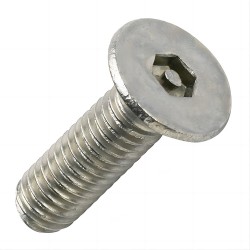 | One of the original security screws, hex pins (socket security screws) use a common socket driver with a center pin for improved tamper resistance. This pin prevents attempts at unfastening using a flat-blade driver and provides slightly higher torque as well as resistance to cam out and tool wear compared to a conventional socket drive. As they are not as complicated to manufacture, they can be offered in smaller sizes and more diverse materials. Most commonly available in flat and button head style screws. |
| • One Way | 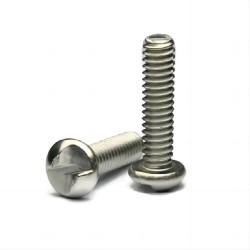 | Also referred to as irreversible or one direction screw, this fastener features a slotted drive that is designed to turn in one direction only; when turned in the opposite direction (to unfasten), these screws will cam out. This type of tamper proof screw is manufactured so the sections of the driver are gradually raised to only engage the bit clockwise for fastening; if turned to the left the bit will be rejected and the driver slips out. Though a one way screw can installed with a standard flat blade, they require special driver to unfasten. One way screws are particularly difficult to remove, so they should only be used in permanent applications. |
| • Pentagon Bolt | 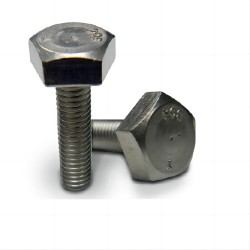 | Also called a penta bolt, these screws provide the same advantages of a standard hex head bolt – wide fastening surface area – but with the added value of an unconventional driver for tamper resistance. Pentagon bolts require a specific pentagon socket that is not often found in retail stores, though they can be tampered with using common items such as locking pliers. Pentagon bolts are ideal when larger size fasteners are needed. |
| • Phillips Pin | 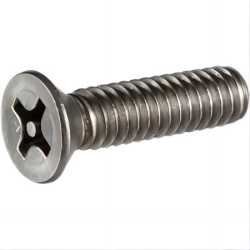 | This basic security screw features an added pin to the, preventing them from being removed with a normal phillips drive bit. |
| • Spanner | 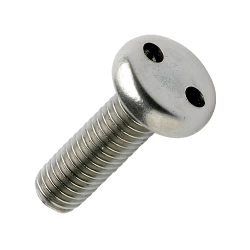 | Also known as snake eye or pig nose screws, spanner screws are easily identified by their two dot driver. Offering extreme security, this unconventional screw can only be removed using a spanner driver which features two pins that fit the snake eye holes. Most commonly available in a pan head and flat head screw |
| • Torx Pin | 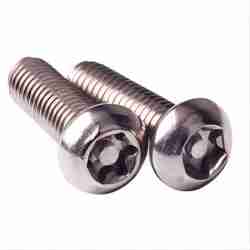 | These screws feature the same 6 lobe design as a normal torx screw, but with a central pin, preventing the use of a typical torx bit for added security. The main advantage of a torx pin screw is that they offer slightly higher torque than a hex pin. Similar to the torx pin, the 5-lobe pin screws have a 5 star (verses 6 star of the tox) driver. These tamper resistant screws offer higher lever of security than the 6-lobe pin torx screws because the driver is less common. In addition, they provide a higher torque capacity. |
| • Tri-Groove | 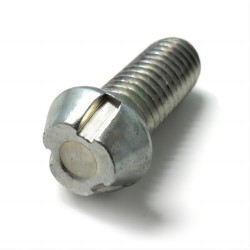 | This unique round head with three side grooves provides high security. Tri groove screws are difficult to grab with standard pliers and require a special socket driver. When proper installation tools are used, this screw offers considerable torque with low fastener distortion and little breakage. |
| • Tri-Wing | 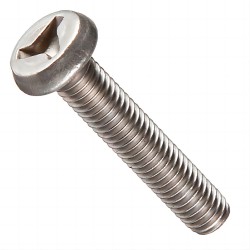 | Tri-drive screws are commonly used on high volume, low security risk applications. This design features a triangle drilled center with three wings. Unlike a tri-point screw which has three wings that intersect in the center, the wings of this screw are off-set. Another version of a tri-wing that is common is called an Opsit® tri-drive, which features a left-handed threads. An Opsit screw can only be removed by turning it clockwise. These are common in aviation and aerospace fasteners. |
Contact: Sino Special Metal Co., Ltd.
Phone: 86-19527792928
E-mail: sales@ssmsteel.com
Whatsapp:86-19527792928
Add: Mudu town Jinfeng South Road, Wuzhong District, Suzhou City, Jiangsu Province
We chat
